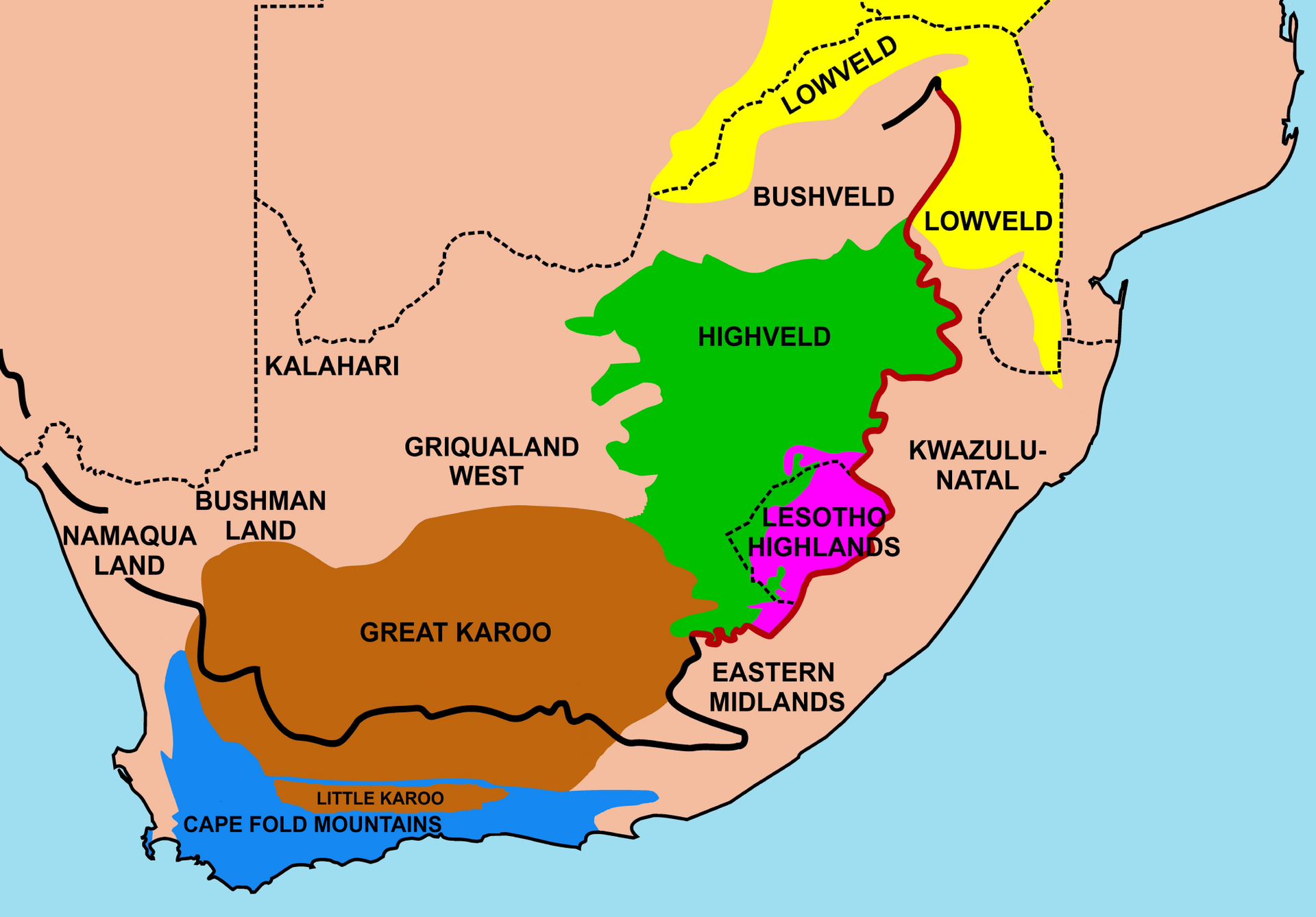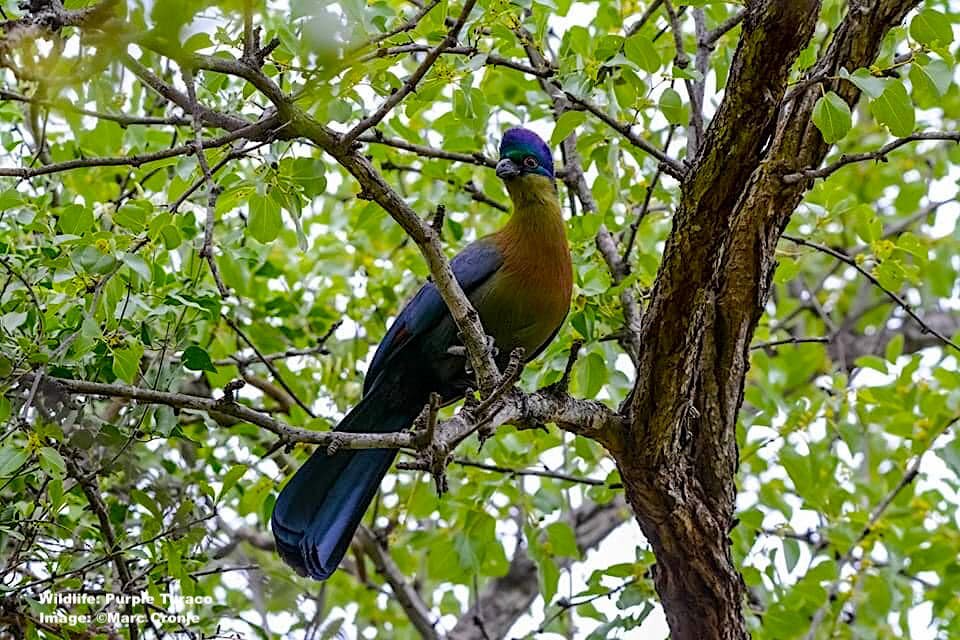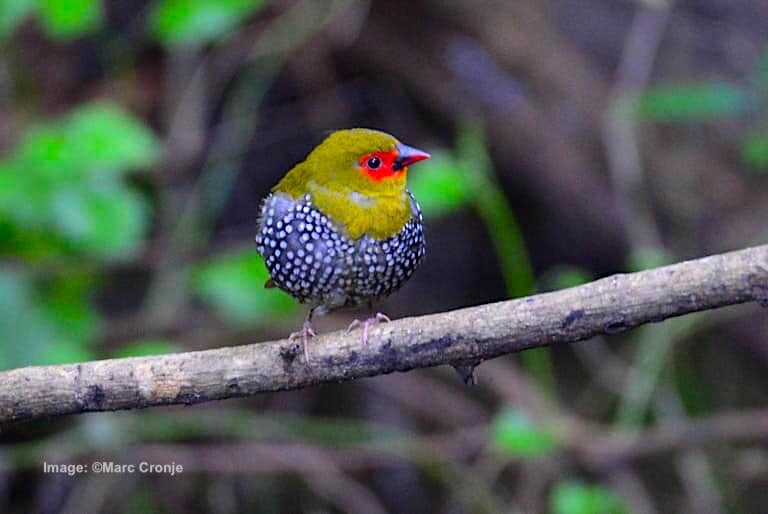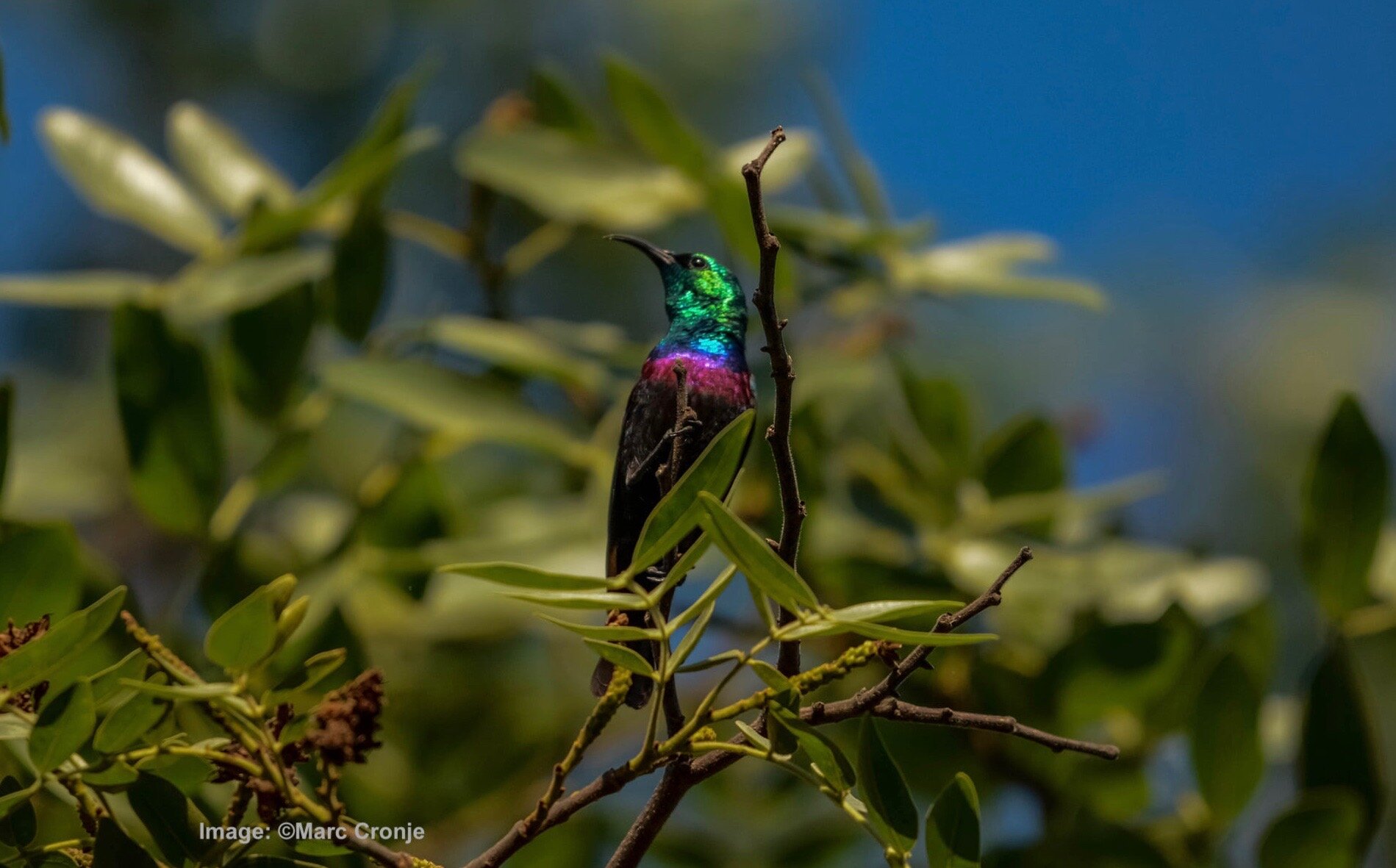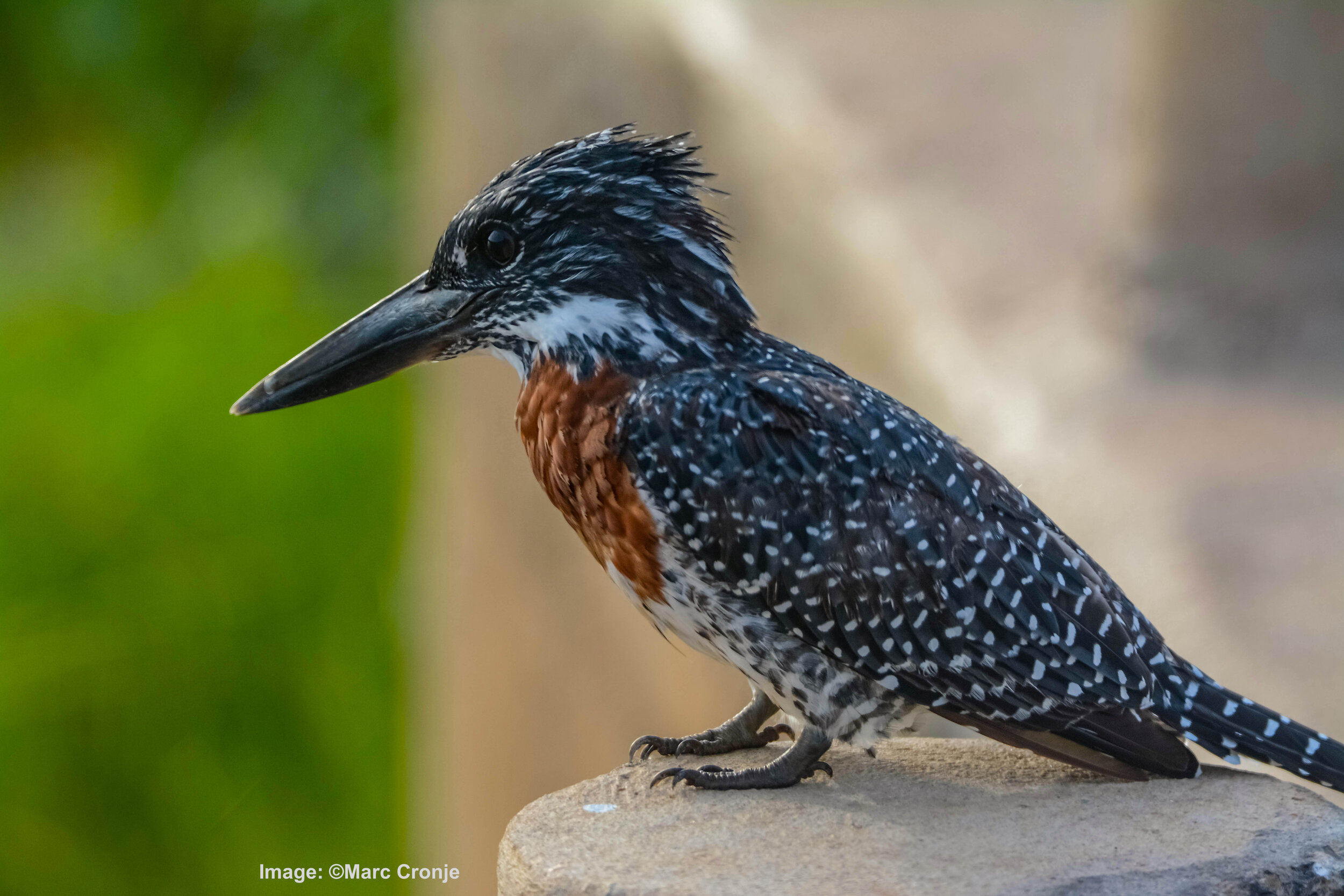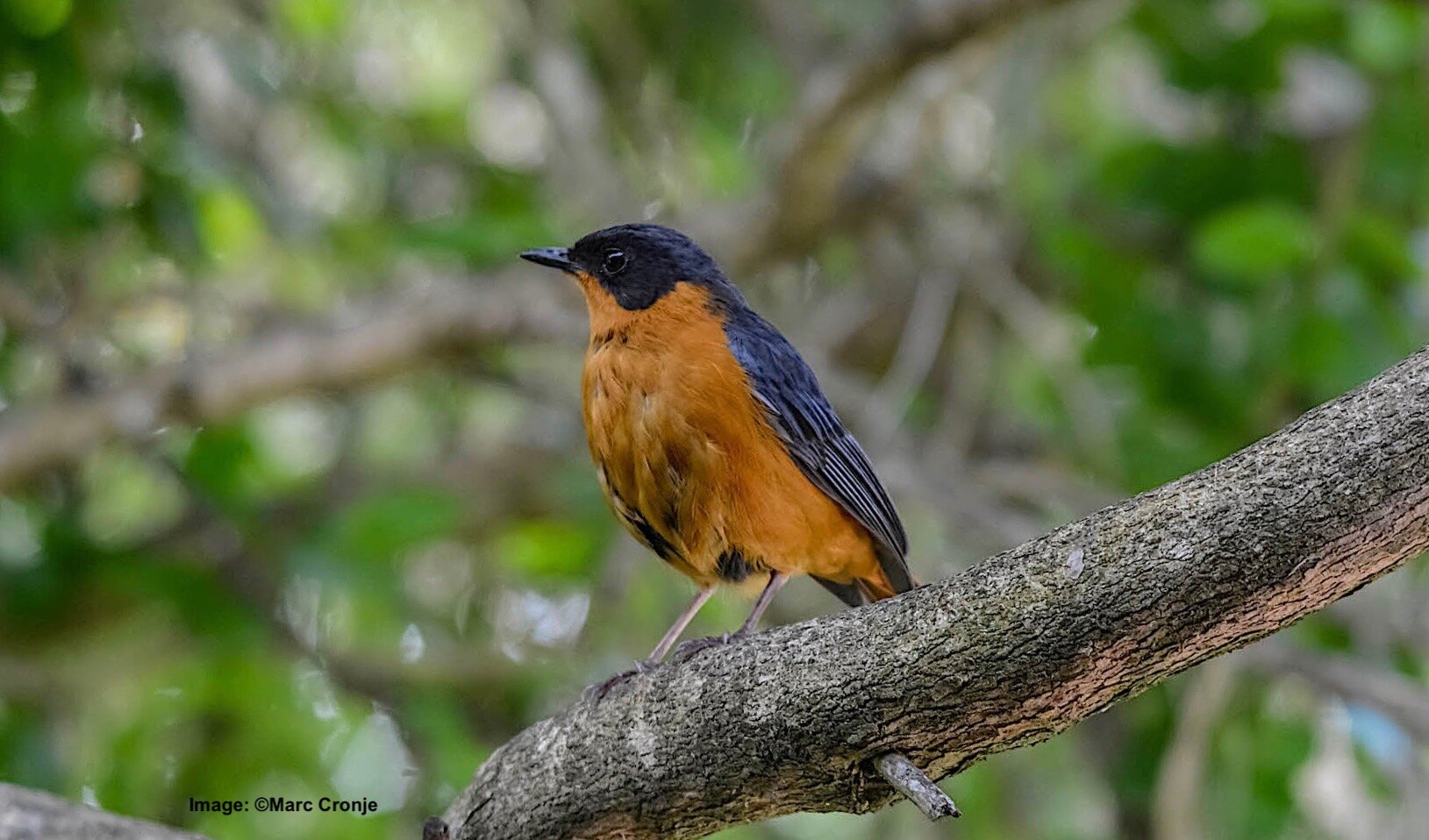What is the Lowveld? South Africa’s Best Kept Birding Secret, Revealed!
Marc Cronje and guest head out for a day of Lowveld birding in the Rietvaley Game Ranch, near Lydenburg, Mpumalanga. South Africa’s Lowveld, is a region so dense with plant, animal, and bird diversity that it has been called “the Real Africa” Image: ©Rene Rossouw
Marc Cronje, naturalist, bird and wildlife guide.
An Interview with Marc Cronje
By Roberta Kravette
From Roberta: Naturalist and wildlife guide, Marc Cronje, who hails from Nelspruit, South Africa, has been a good friend since we met years ago on our first African safari. We'd expected to see big charismatic mammals, and did, but Marc taught us how to look into the whole fascinating ecosystem, giving us a much richer experience.
During the COVID pandemic travel ban, Marc has been searching out the birds in his home region, South Africa's Lowveld. We wanted to hear more.
Knysna Turaco, found only in South Africa, is one of striking species at home in the Lowveld region. Image: ©Marc Cronje
Where and What is the Lowveld?
✓ Trip Tips
Where: Lowveld region.Northeastern South Africa
What: Bird and Wildlife
When: All year.
Who: Birders and wildlife lovers.
Marc: The Lowveld has been called "The Real Africa" as it is host to over 700 different bird and mammal species, including the sought-after Big Five. Much of it is protected and accessible to nature lovers from all over the world.
Marc: The region, located on the eastern side of South Africa, drops down the Great Drakensberg Escarpment from the Highveld. The area designated "Lowveld" consists of broad valleys below 1000m (3280ft) above sea level. In this low-lying subtropical climate, broad-leaved trees and thorn trees co-exist in relatively open woodland, interspersed with long grass, lots of wildlife, and incredible birds.
The Lowveld, A Region of Amazing Biodiversity
✍︎Editor's Note: The Lowveld consists of 3 biomes: grassland, savanna, and forest.
Marc: Most of the Lowveld falls within Mpumalanga province, which means 'place where the sun rises'. This is well suited, as Mpumalanga is South Africa's easternmost province. [The city of] Nelspruit [also called Mbombela] is the provincial capital and a gateway to the Lowveld.
What Bird Species Might You See in the Lowveld?
Marc: These are just a few of the unique birds we regularly see on the Lowveld trips: Crowned Eagle, Narina Trogon, Orange Ground Thrush, Bush Blackcap, Knysna and Purple-crested Turaco, Gorgeous Bushshrike, Pink-throated Twinspot, Green Twinspot, Martial, Tawny and Booted Eagle, Brown Scrub-Robin, Grey Cuckooshrike, African Emerald Cuckoo, Eastern Nicator, Black-winged Lapwing, Cape Grassbird, Broad-tailed Warbler, Half-collared Kingfisher, Striped Pipit, Swee Waxbill and Jackal Buzzard… there are many more!
Do You Have Favorite Lowveld Birding Locations?
Collared Sunbird at Steiltes Nature Reserve. Birding in the Lowveld region is a beautiful event. In the spring flowers and butterflies are part of the experience. Image: ©Rene Rossouw
Marc: Kaapsehoop (southwest of Nelspruit) at the moment (summer) has the Malachite Sunbirds and Gurney's Sugarbirds feeding on the flowering aloes.
Other great birds up in Kaapsehoop include Knysna Turaco, Bush Blackcap (endemic to South Africa), Cape Rock Thrush, Buff-streaked Chat, Chorister Robin-chat, White-starred Robin, Drakensburg Prinia, Jackal Buzzard, Forest Buzzard, Swee Waxbill, Forest Canary, Wing-snapping Cisticola, Lemon Dove, and Barratt's Warbler.
Much of the Lowveld is protected. Marc Cronje is helping to develop the bird list for Rietvaley Game Ranch. Image: ©Rene Rossouw
Marc: The Nelspruit area itself, including the Botanical Gardens, hosts excellent birds. Of particular interest is the Southern Bald Ibis, endemic to South Africa. They nest in the botanical gardens; sometimes, you can find them right behind Halls's farm stall.
A bonus to your visit to Nelspruit Botanical Gardens are breeding endemic Bald Ibis. Image: ©Rene Rossouw
Marc: The Crocodile River at the Grace Hall Bridge before the Lowveld Botanical Gardens is the place to seek out the African Finfoot. The Steiltes Nature Reserve (9-minute drive from the center of Nelspruit) offers excellent birding, including Trumpeter Hornbill, Green Twinspot, Striped Pipit, and (breeding) Crowned Eagles.
What looks (sort of) like but is not related to a duck and “runs” on water? The African Finfoot. The IUCN Red List acknowledges they are decreasing, although not yet listed “Vulnerable”. This bird is shy. Enjoy it quickly, it may disappear faster than you can say, “who’s that?” Image: ©Marc Cronje
Marc: Other unique birds to be found within the Nelspruit/Barberton and White River areas include Bat Hawk, Gorgeous Bushshrike, Narina Trogon, African Pygmy Goose, Abdims Stork (a rare summer visitor), Purple Heron, Brown Snake Eagle, Long-crested Eagle, African Goshawk, Little Sparrowhawk, Black Sparrowhawk, Lemon Dove, African Green Pigeon, Cape Weaver, Giant Kingfisher, Green Wood Hoopoe, Grey-rumped Swallow, Lesser Honeyguide, Eastern Nicator, Cut-throat Finch, Olive Sunbird, and Purple-banded Sunbird.
Marc: Another of my favorite areas is the Makhonjwa Mountains and the Peddlers Bush area behind Barberton.
We have exceptional forest birding there with special birds being: Olive Bushshrike, Square-tailed Drongo, African Emerald Cuckoo( Summer visitor), White-starred Robin, Brown Scrub-Robin, Blue-mantled Crested Flycatcher, Orange Ground Thrush, Grey Cuckooshrike, Narina Trogon, Rufous-breasted Sparrowhawk, Gurney's Sugarbird, Crowned Eagle, Swee Waxbill, Knysna Turaco, Olive Woodpecker, Trumpeter Hornbill, and Scaly-throated Honeyguide.
The Woodland Kingfisher is more excited by large insects, arthropods, snakes, or frogs rather than fish. Image: ©Rene Rossouw
Do You Bird in Kruger National Park?
Marc: Yes! Kruger National Park, famous for its wildlife, is situated in the Lowveld. The park's bird diversity is incredible. If we take the time to notice them, we get to see so much more than just the Big 5.
The entire park is excellent for bird watching. When Kruger re-opened [from the COVID lockdown], I visited and recorded over 120 species of birds between Malalane and Lower Sabie - and this was winter!
After a day of birding, the Lowveld rewards you. Sunset at Kruger National Park. Image: ©Rene Rossouw
In the summer, the northern parts of Kruger have some of the best birding in South Africa. But don't forget the southern regions. The Skukuza area, including the Golf club, Lake Panic, and the nursery, always has great birding and wildlife viewing.
Can You Share Your Favorite Kruger Birding Spots?
Without giving away secrets, of course!
Marc: Northern Kruger has some of my favorite places. Punda Maria rest camp, and Pafuri region (Pafuri picnic spot and Crooks Corner). Pel's Fishing Owl, Thick-billed Cuckoo, Crested Guineafowl, Lemon-breasted Canary, Racket-tailed Roller, Arnot's Chat, Black-throated Wattle-eye, Three-banded Courser, and Pennant-winged Nightjar are the top birds of the area.
Pel’s Fishing owl, a large, nocturnal owl, vocal mostly on moonlit nights - and one of Marc’s favorite birds. Image: ©Marc Cronje
Has COVID-19 Changed Birding?
✍︎Editor's Note: Birding is the perfect pandemic option for small bubble groups of friends or family.
Marc: I don't think so. Apart from us [the tour companies] not having scheduled trips with multiple guests to guide the birding is the same. [In the future] we will be doing more specialized and private tours - I don't think big group travel will be a thing [after the pandemic]
Marc: It's been a great time [during the pandemic] to enjoy local birding in the Lowveld. I have loved getting to know so many birding spots within 100km of my home and finding the area's odd and good birds. Last weekend, some friends and I competed and won a bird race, Birdlife South Africa's "Birding Big Day." We recorded 335 species of birds in our area in 24 Hours- this in a 50k set radius.
Birding, the perfect pandemic “bubble” activity; Outdoors, strenuous - or easy - as you make it and great for multi-generational family groups. A guide ensures that even the first-timer will have success. Image: ©Rene Rossouw That’s Marc, second from right.
In Your Opinion, What is a Guide’s Most Important Job?
Marc: I believe my most important job is ensuring that our clients have a great time. We are there to provide our guests with the best chance to see and enjoy the area's birds and wildlife. We make sure our guests are safe, and if there are any problems, we are there to fix them as best as we can.
Professional guides take care that the tour runs smoothly and that our guests have the best and most memorable time possible.
Says Marc, ”I have been leading tours across Southern Africa for seven years; it has taught me patience and how to work with different personalities and cultures.” Image: ©Rene Rossouw
What Do You Love Most About Guiding?
Marc: I enjoy being out in nature, exploring new areas and places, learning about a new country, wildlife and birds, the people, and the cultures.
But I absolutely love sharing my passion for birding and wildlife with my guests, which pushes me to make the most of every tour and show my guests as much as possible. When guests see a bird or animal for the first time. You can see the excitement and joy in their faces.
Says Marc: I always appreciate a good laugh. I believe a laugh a day keeps the Doctor away. Image: ©Rene Rossouw
Marc: [And I love] learning from my guests, hearing from them about their travels and experiences is something I also enjoy. And when guests on tour become friends and travel with me multiple times, it is gratifying.
Traveling and visiting new places, experiencing new cultures, and enjoying birds and wildlife is my dream job, and I would not change it for anything. I am very blessed that I can travel through Africa and the world doing what I love. So awesome.
The African Barred Owl population is decreasing, and it is uncommon in most of its range. This guy seems surprised at being found. Image: ©Marc Cronje
They Say Nature Teaches Us About Ourselves. What Has Nature Taught You?
Says Marc, ”I have been leading tours across Southern Africa for seven years; it has taught me patience and how to work with different personalities and cultures.”
I also consider myself to have good "potting" or "bush" eyes and good hearing. And I’m very interested in animal behavior and have gained much knowledge through my years of experience as a Kruger field guide. Sharing this understanding with my guests allows me to pass on insights that can have them sitting on the edge of their seats.
And over the years, I have developed trust in following my gut and sticking to a plan to find wildlife.
The Bush Blackcap, one of South Africa’s endemic species, a good place to find this rare bird is Kaapsehoop. Image: ©Marc Cronje
We Have Been Speaking Mostly About Birding, but the Wildlife Viewing in the Lowveld is Wonderful!
Is There a Difference in How Wildlife and Birding Tours are Conducted?
No, not really; the difference is just in the main focus. Are we concentrating on birds or mammals? On the birding tours, we still target and enjoy the wildlife that is on offer. I am a keen mammal lister, so I enjoy seeing new mammals.
Giraffes and other wildlife are part of the day’s birding adventure in South Africa’s Lowveld. Image: ©Rene Rossouw
Are You a “Lister”?
Marc: For sure! I am a fanatical lister and keep separate lists for my province (Mpumalanga), Kruger National Park, South Africa, Southern Africa, and Africa. I am starting a world list and hope to travel more extensively. One regret I have is not keeping a list while on my travels in Central and Western Africa. However, I believe in enjoying the bird and not just adding it to a list and getting a "tick." I still enjoy watching common birds in the garden; that's why I call myself a bird “watcher."
Marc guides his guests to their first sighting of Knesya Turaco in Peddler’s Bush. Image: ©Rene Rossouw
What Advice Would You Give to a New Birder?
Marc: Start by enjoying the birds in your garden. First, get to know and identify your garden birds, then take it from there. Travel to new areas to discover new species and use bird guides, making your birding experience so much more enjoyable. Most importantly, enjoy your birding and being in nature. Take it all in, enjoying whatever you see.
Lastly, there is so much to explore in the Lowveld.
Is there a “Best Time” to Bird the Lowveld?
Roberta: The best time for birding the Lowveld is just about anytime. May to September is South Africa’s winter season, the foliage is less lush and the temperature is cool and dry, making for especially comfortable wildlife and bird viewing. I love South Africa’s winter. But, in spring and summer, the Lowveld becomes an artist’s palette of colorful flowers, migratory birds, and of course, baby animals. It’s a little wetter, lush, and exciting.





